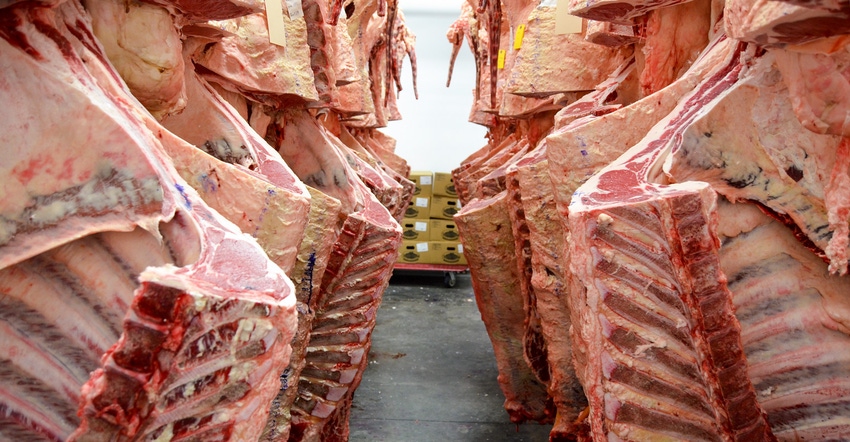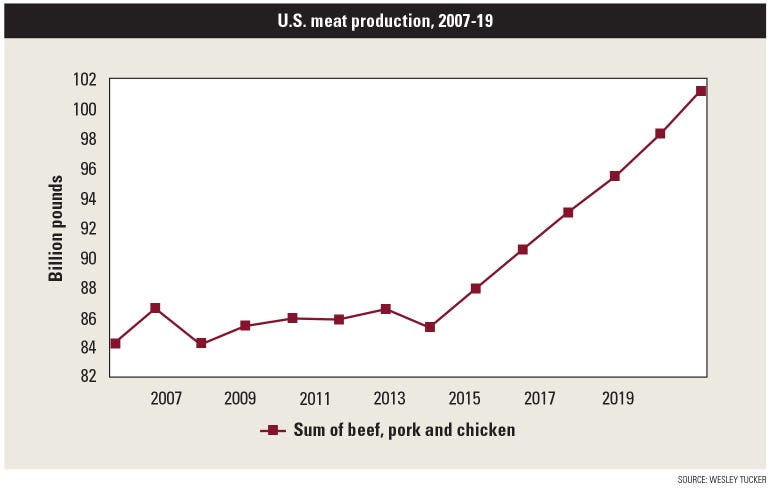
Farmers and ranchers are asking each American to consume 205 pounds of combined beef, pork and chicken this year, the greatest amount in more than 40 years. It leaves University of Missouri Extension ag economist Wesley Tucker wondering just how much meat is too much?
“Every livestock talk I've given for the last six or seven years has basically said, ‘OK guys, we're growing supply, but thankfully demand is holding in there and is really, really strong.’ But I’ve warned for the last six years that if demand ever stubbed its toe, it could have some really bad impacts on prices.”
The American beef industry just stumbled into the COVID-19 coffee table leg, caught its big toe and is feeling pain up and down the industry.
Related: Complete coronavirus coverage
Beef industry performance
Today, U.S. meat production tops 100 billion pounds annually. Tucker says it has been growing at an alarming rate.
Between 2007 and 2014, the cumulative amount of beef, pork and chicken ranged between 84 and 86 billion pounds, increasing about 2 billion pounds over the eight-year time period. Then, starting in 2014, production grew by 2 billion pounds in a single year. It was the beginning of a continuous upward movement in meat supply.
“We've grown it by 2 billion every year until this year,” Tucker explains. “So basically, six years of 2 billion pounds plus each year.”

Beef demand decreases
Over the past several years, there has been a robust demand for meat and, in particular, beef.
The economy has been strong with low unemployment rates. “Consumers said I want to eat what I want, and more times than not they were choosing beef,” Tucker explains.
When people had a steady income and beef prices ticked higher in supermarkets, they did not opt for lower-priced proteins but rather stayed with beef. Then came COVID-19 and the economy changed.
“When you go from less than 5% unemployment to much, much higher rates,” Tucker says, “now we've got some concerns.” There is just too much meat in the marketplace.
Meat and beef producers already are dealing with lower prices. Those fears may grow if the U.S. reaches unemployment rates in the 20% or 30% range, Tucker adds. At that point, there will be a beef demand shift.
Tucker contends that whenever people are unemployed for short or long periods of time, they look for ways to save money and that often includes buying cheaper meat or even cutting out meat all together.
Beef producers, like many segments of the American agriculture economy, like to think that after COVID-19 passes, life will return to normal and all will be well.
“Unfortunately, it may not,” Tucker says. “If demand suffers from a weakened economy, prices will suffer. All of this meat that we're putting on the market this year will clear the market somehow, but at what price?”
Tucker calls the current beef market situation “ugly.” There is no doubt the long-term demand for beef is going to suffer, he says, and that poses risk for beef producers.
Read more about:
Covid 19About the Author(s)
You May Also Like






